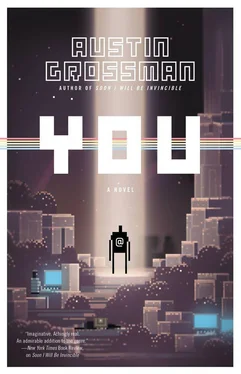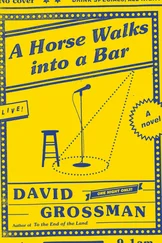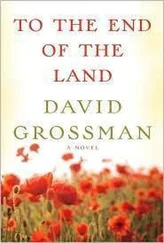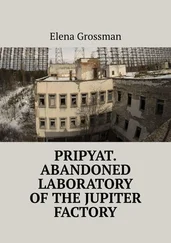“C’mon, nothing? That’s bullshit. This is a plasma gun or some shit.”
“It’s just a rule—there had to be a thing nothing could cut so we could keep players from breaking out of the world entirely.”
“Can’t the thief pick the lock?” Don said. He pointed at Prendar. “Isn’t that a thief?”
“Uh, right,” said Matt. I set Prendar to working on it. It took about five seconds. It was a hard lock, but Prendar had been a thief since back when doors were made of stone.
“Weren’t you going to cut the thief class?” said Matt. “Something about their being useless.”
The door opened, and, as Brennan, I went through. Brennan wasn’t dressed for it, but he had a sword from the future and melee skills superior to anyone except maybe Adric himself. The door slammed shut behind me. I wouldn’t see the others again.
Beyond the portal, it was spring in Endoria the Electronic Trading Platform. I stood in a city square next to a dry fountain. It had rained recently, and there were puddles among the cobblestones, puddles that reflected the sky beautifully. Lisa had written a really, really pretty renderer.
Adric stood there, looking around for souls to drain. Around us, trading continued; with their combat instincts suppressed, the innocent dwarves, gnomes, humans, and elves would go on with their speculation and arbitrage until they picked up the cursed sword. The stage was silent. Brennan faced Adric. The vibro-sword buzzed; the black runesword moaned.
Darren got up to take my place. “I should probably do this part.”
“Let Russell do it,” Matt said. “We kinda tweaked things after you left. Added a couple of things.”
“Okay,” Darren said, but he sounded dubious, and I decided Matt was right.
One way to think about game design is in terms of verbs—what is the array of verbs available to a player? Obviously, there must be fighting, because otherwise (at least for many of us) why play a video game? But what verbs does that involve, exactly? Matt and I considered the previous game’s system too simplistic, too dumbed-down, and Don agreed. We set to work to change that.
First, we prototyped the combat system as a card game using 3-by-5-inch note cards to stand for actions. A player could choose to attack high, attack low, block high, or block low. Once the cards were turned over, a high attack against low block, or low attack against high block, dealt the most damage. Simultaneous attacks resulted in less damage. Each player had a limited supply of hit cards and block cards, so by counting cards, players could guess at each other’s strategies. Not terrible. We demonstrated it at the next company-wide meeting, to modest applause.
It wasn’t enough. I’d had a semester of saber fencing in college and had a green belt in hapkido. Matt had an extensive knowledge of the writings of Robert E. Howard, Fritz Leiber, Roger Zelazny, and Michael Moorcock, plus he had seen all the Highlander films in their original theatrical release. We agreed that a really good sword fight wasn’t about just choosing one of four options. We needed panache, daring, and creativity. We needed more note cards.
We began to build out the system. What if a strike that directly followed a successful block did extra damage? Now the simple matching game acquired a new rhythm, and just a tiny element of drama. Thrust, parry… riposte!
It wasn’t enough. Encouraged, we did what any self-respecting game designer does: we added a gratuitous number of features. Forehand and backhand attacks; long-range thrusts; sweeping cuts. Directional parries, first the basics—tierce (right), quarte (left), and quinte (upward)—then prime, seconde, sixte, septime, octave. Corps-à-corps! En garde! We shared the conviction that a simulated universe that could not express these things was not a universe worth simulating.
Still, it wasn’t nearly enough. The minutiae of footing and weight changes, obviously. Stances, hit location, armor, unarmed combat, different materials. Flint ax heads shattered against metal plate. Bronze weapons could be hacked to pieces by carbon steel blades.
After ten weeks of work, we could play out an altercation between an eighteenth-century French mercenary with a short sword and buckler (a saucer-size shield with a pointed spike—as Eskimo language is to snow, so archaic English is to “metal objects designed to cause harm”) and a Roman legionnaire from the age of Marius, with his gladius, scutum, and pilum. Vae victis!
I felt the three of them watching while I tried to work through the variables in my head. I would play Brennan, a tall muscular human with high skills across the board, but he favored a heavy blade. To his disadvantage, he now held a delicate saber, light and whippy, with a fiftieth-century keenness. My opponent, Adric, I judged to be a maxed-out Scottish greatsword artist wielding a four-foot blade.
I had a great deal of speed, but he had the longer reach. I was unarmored; he wore chain mail and a fancy helmet that flattered his cheekbones. In addition, Adric was a First Age Correllean noble, which involved a long string of modifiers I didn’t know about, although I could assume it meant he was a badass. He suffered from a long-term Byronic depression, although that might not translate tactically.
Adric advanced forward without ceremony, the massive sword held out in front of him, vertical and tilted slightly back, just as it was in the Renaissance fencing manual we’d taken the moves from. When the blade descended, its moaning dopplered up and down the scale. He made three looping overhand strikes that I backed way the hell away from, because I wasn’t sure the cursed sword could be blocked at all. But I had to at least try. I blocked the third one; when the blades touched, the sound suggested a dying god impacting an electrified high-tension wire. Adric’s pale horse face kept its signature expression—the weary, sophisticated sneer of a man who has forgotten how many souls he’s taken, who pities the world that must contain him.
I ran at him and struck at him over and over, fast and sloppy, thinking to outpace him, but his defense seemed immaculate. He waited for a break, then stepped behind himself and pivoted all the way around for a low backhand. I fumbled at the keyboard for a split second, no idea what was happening, and wound up blocking in a crouch. Then Brennan wouldn’t stop crouching and shuffled around parrying until I realized the Caps Lock key was down. I wished Darren weren’t watching.
I made mistakes, but I knew the system, or I knew what to try. I slithered in and cut up Adric’s forearms. I ducked under sweeping cuts and jabbed for the belly. I started to remember the little tics of posture that led into his special attacks, and anticipated them. I nicked him a few times—his blade was unquestionably slower—but he had the hit points of a bull elephant. He had a guard stance that made him almost unhittable, a stance I let him take until I realized he was regenerating hit points. I switched stances, too, to a slightly precious-looking saber stance, body sideways, left arm tucked behind the back. I nipped hit points off of him. Brennan could do a lot of things. He had nifty forward roll and upward thrust. He had a countercut off a parry in quarte that popped back in the opponent’s face. But Adric had responses ready. I circled around Adric, and he sidestepped to cut me off. It was hard to commit to a real attack when I couldn’t risk taking even a minor cut. I had the fleeting thought that in all this, some part of me was learning a lot about game design.
Fighting games, Jared once explained to me, are about yomi. Yomi is a concept popular with game theorists, tournament-level fighting-game players, and people who like having Japanese words to throw at you. It means, literally, “reading.” Figuratively, it means understanding your own and your opponent’s options in a given situation while simultaneously knowing that your opponent knows those things, too, and then trying to predict what he will do, knowing that he may know what your prediction might be and change his mind accordingly.
Читать дальше





![Ally Carter - [Gallagher Girls 01] I'd Tell You I Love You But Then I'd Have to Kill You](/books/262179/ally-carter-gallagher-girls-01-i-d-tell-you-i-lo-thumb.webp)






